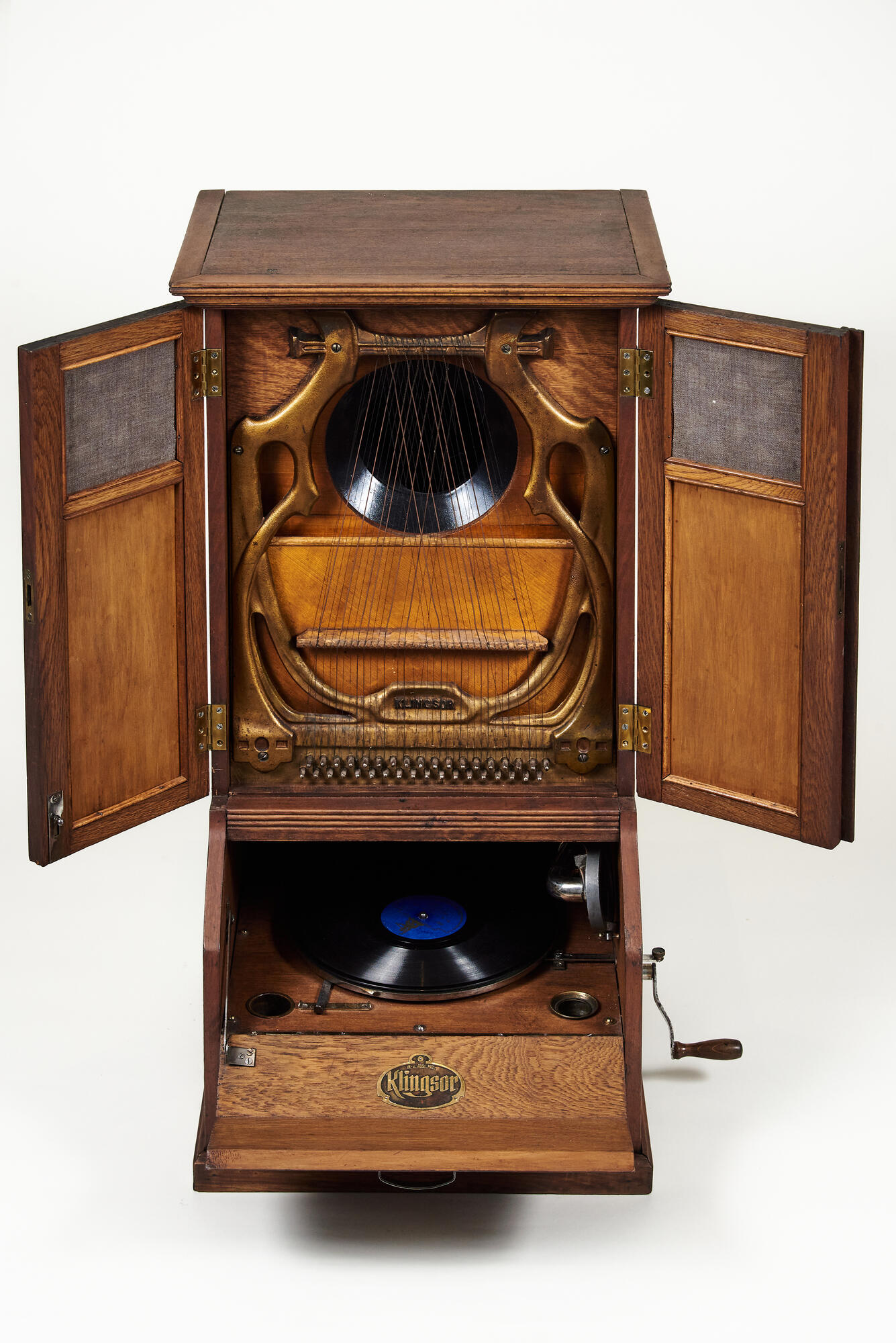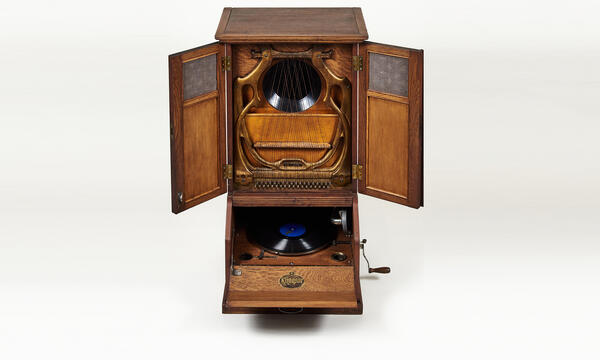The invention of a gramophone was an extremely important milestone in the history of recording and sound reproducing machines. Like many other similar devices, the gramophone was based on Thomas Edison’s invention — a phonograph, which, however, had its drawbacks and was not intended for mass use. The gramophone became the second stage in the history of sound engineering.
Emil Berliner from Germany was the one who invented the first gramophone and the disk for it. He also developed a mechanism for record dubbing and created disks that served as sound carriers. This enabled his invention to become the first mass-produced musical device. The gramophone was officially invented in 1887, when Berliner received a patent for its development. The gramophone operated using a needle that slid along the sound groove on the record surface and transmitted vibrations to the membrane.
The collection of the museum includes the gramophone with string resonator of the early 20th century. The second name for such devices is “ship gramophones”, as they were often located in the ship’s main saloon — a large room for lunch, rest, and communication of the crew. Similar models of gramophone are displayed in many major museums. The Polytechnical Museum, the Vladimir-Suzdal Museum-Reserve, and the Dnepropetrovsk National Historical Museum are among them.
The string resonator was added after Berliner had presented his invention, and specialists from all over the world began to improve it. The first such models were produced in England in 1907 and quickly spread throughout the European countries. The string resonator is also called a ‘zither’. The sound passing through the strings became enriched: the instrument sounded better, richer, and clearer.
The gramophone’s appearance also changed over time. At the beginning of the 20th century, the manufacturers stopped using the form of the wooden case with a pipe and began to decorate the device more elegantly. The mechanism was built into ornate cabinets, decorated with majolica — ceramic pieces made of colored terra cotta, covered with glaze. Everything was done so that the gramophone could be a perfect decoration for rich houses and salons.
However, despite many experiments, the cabinet form turned out to be the most convenient and became the most popular for gramophones. Such device produced by the German company Krebs & Klenk is displayed in the museum. It was manufactured in Leipzig. Mirrored doors and string systems, shaped like a lyre, emphasize the elegance of the form. This device can be called a prototype of the modern stereo sound system.
Emil Berliner from Germany was the one who invented the first gramophone and the disk for it. He also developed a mechanism for record dubbing and created disks that served as sound carriers. This enabled his invention to become the first mass-produced musical device. The gramophone was officially invented in 1887, when Berliner received a patent for its development. The gramophone operated using a needle that slid along the sound groove on the record surface and transmitted vibrations to the membrane.
The collection of the museum includes the gramophone with string resonator of the early 20th century. The second name for such devices is “ship gramophones”, as they were often located in the ship’s main saloon — a large room for lunch, rest, and communication of the crew. Similar models of gramophone are displayed in many major museums. The Polytechnical Museum, the Vladimir-Suzdal Museum-Reserve, and the Dnepropetrovsk National Historical Museum are among them.
The string resonator was added after Berliner had presented his invention, and specialists from all over the world began to improve it. The first such models were produced in England in 1907 and quickly spread throughout the European countries. The string resonator is also called a ‘zither’. The sound passing through the strings became enriched: the instrument sounded better, richer, and clearer.
The gramophone’s appearance also changed over time. At the beginning of the 20th century, the manufacturers stopped using the form of the wooden case with a pipe and began to decorate the device more elegantly. The mechanism was built into ornate cabinets, decorated with majolica — ceramic pieces made of colored terra cotta, covered with glaze. Everything was done so that the gramophone could be a perfect decoration for rich houses and salons.
However, despite many experiments, the cabinet form turned out to be the most convenient and became the most popular for gramophones. Such device produced by the German company Krebs & Klenk is displayed in the museum. It was manufactured in Leipzig. Mirrored doors and string systems, shaped like a lyre, emphasize the elegance of the form. This device can be called a prototype of the modern stereo sound system.



